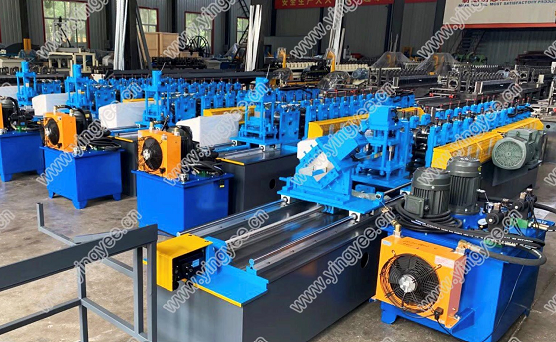
The Steel Cable Tray Making Roll Forming Machine An Essential Tool for Modern Infrastructure
In today's fast-paced industrial world, the demand for efficient and reliable cable management systems is more critical than ever. One of the innovative solutions that have emerged in recent years is the steel cable tray making roll forming machine. This sophisticated equipment has transformed the way cable trays are produced, ensuring that they meet the diverse needs of various sectors such as construction, telecommunications, and electrical engineering.
Understanding Steel Cable Trays
Before delving into the roll forming machine itself, it is essential to understand what steel cable trays are and their purpose. Cable trays are integral components in electrical installations, providing support and organization for electrical and communication cables. These trays help protect the cables from environmental factors, reduce the risk of damage, and ensure efficient routing within buildings or infrastructure. Made from durable materials like steel, these trays can withstand significant weights and harsh conditions, making them ideal for heavy-duty applications.
The Role of Roll Forming Machines
The roll forming process is a manufacturing technique where metal is shaped into desired profiles by passing it through a series of rollers. The steel cable tray making roll forming machine automates this process, significantly enhancing production efficiency and consistency. This machinery can produce various tray profiles, including perforated trays, solid bottom trays, and ladder types, catering to different industry requirements.
Key Features of Steel Cable Tray Making Roll Forming Machines
1. High Efficiency These machines are designed for continuous operation, allowing for high production rates without compromising quality. This is vital for meeting the increasing demand for cable trays in various projects.
2. Versatility One of the standout features of roll forming machines is their ability to accommodate different steel thicknesses and profiles. Manufacturers can easily switch between designs, enabling them to offer tailored solutions to their clients.

3. Automation Many modern roll forming machines incorporate advanced automation technologies, including automated feeding systems, cutting mechanisms, and control systems. This automation reduces labor costs and the potential for human error, leading to improved product quality and reduced waste.
4. Durability Constructed from robust materials, these machines can endure the rigors of heavy use. This durability translates to lower maintenance costs and extended service life, presenting a valuable investment for manufacturers.
5. Cost-Effectiveness Although the initial investment in a steel cable tray making roll forming machine might seem significant, the long-term savings gained from reduced labor, minimized waste, and high production rates make them a cost-effective solution.
Applications Across Industries
Steel cable tray making roll forming machines are utilized in numerous sectors, reflecting the versatility of cable trays themselves. In the construction industry, these machines help produce trays that support electrical systems, keeping buildings safe and organized. In telecommunications, they manage data cabling installations effectively. Additionally, they play a crucial role in manufacturing plants and warehouses, where efficient cable management is essential for operational efficiency.
Future Trends and Innovations
As industries continue to evolve, so too will the machinery that supports them. Future advancements may include enhanced automation, smart technology integration allowing for real-time monitoring and adjustments, and greater customization features to meet specific client demands. Sustainable manufacturing processes, utilizing eco-friendly materials and practices, may also gain prominence as companies strive to reduce their carbon footprints.
Conclusion
The steel cable tray making roll forming machine represents a pivotal advancement in the manufacturing of cable management systems. With its efficiency, versatility, and durability, it revolutionizes production processes and contributes significantly to the infrastructure of modern society. As industries grow and technology evolves, these machines will undoubtedly play an even more crucial role in supporting the extensive networks of cables that power our world. Investing in such technology not only streamlines operations but also enhances the overall safety and reliability of electrical and telecommunications systems.